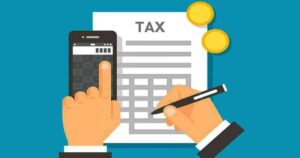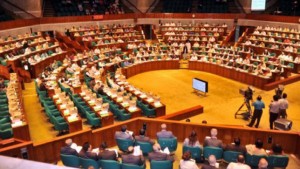Dhaka – The economy of Bangladesh will grow at 6.9 percent this and next years, according to a latest report of the Asian Development Bank (ADB).
“In Bangladesh, South Asia’s garment industry leader, exports are a key element driving growth that is forecast at 6.9 percent in 2017 and 2018,” said the Asian Development Outlook (ADO). UNB news agency reported
The flagship report of the ADB also termed the projected growth ‘more impressive given sluggish growth in developed economies in Europe and elsewhere which Bangladesh relies upon as markets for its exports and as a source of remittances’.
The report said the economic growth in developing countries in Asia and the Pacific is expected to tick down a notch-from 5.8 percent in 2016 to 5.7 percent this year-due to slower growth in the China.
“But, someone forgot to tell India, Bangladesh, Bhutan, and other parts of South Asia-where surging economic growth is now the norm for many countries. South Asia’s economy as a whole is expected to grow at 7 percent in 2017, increasing to 7.2 percent in 2018,” the report said.
In the report, the ADB is highly optimistic about the prevailing political situation expecting that the ‘political calm will continue and thus will support consumer and investor confidence’.
At the same time, it expects that the central bank will be generally mindful about keeping inflation in check while allowing ample private credit growth to support economic activity.
It, however, pointed out that the GDP growth will be faster should there be higher demand in the euro area and the UK does not depreciate its currency against the dollar.
The ADB is also very positive on the macro-economic sectors, saying increases in wages and continued access to credit will help sustain private consumption while private investment will rise only slightly, but public investment is expected to strengthen through fiscal expansion.
The report projects that the agriculture will grow at 2.4 percent in the current fiscal year and 2.3 percent in the next financial year mainly because of limits on area expansion and productivity improvement.
It said industry growth is expected to be 10.6 percent this year in tandem with domestic demand, which will rise to 10.7 percent in the coming fiscal.
The ADO projects that the inflation may pick up in the end of the current financial year to average 6.1 percent and 6.3 percent in 2018 as global fuel prices continue to rise and a new value added tax comes into effect at the start of the year.
The report said the export growth will be strengthened in the 2nd half of this year and the upward trend will continue in 2018 when the growth for this sector will edge up to 7.0 percent on steady external demand and improvement in the market share.
In the report, the ADB said overseas employment of Bangladesh workers rose by 23.5 percent in the first six months of the current fiscal year, but the remittance inflows declined as economic tightening continued in the Gulf Cooperation Council economies and newly constrained inflows from the US and the UK.
The ADO cautioned that falling remittances and a larger trade deficit are expected to push current account into a deficit equal to 1.0 percent of GDP when taka would likely depreciate marginally in nominal terms.
It also said growth in South Asia is forecast to rebound to 7.0 percent in 2017 and pick up further to 7.2 percent in 2018. India will see growth reaccelerate to 7.4 percent in fiscal year 2017 and 7.6 percent in 2018 despite drag caused by excessive corporate investment in the past and bank lending currently constrained by a heavy load of stressed assets.
Elsewhere, growth will be lifted by spending on earthquake reconstruction in Nepal, hydropower investment and output in Bhutan, and economic corridor investment from the PRC in Pakistan.
Inflation in South Asia has trended lower in recent years, easing to 4.6 percent in 2016 as buyers benefited from low prices for oil and other commodities. With these prices turning upward over the forecast period, inflation in South Asia is projected to revive to 5.2 percent in 2017 and 5.4 percent in 2018.




